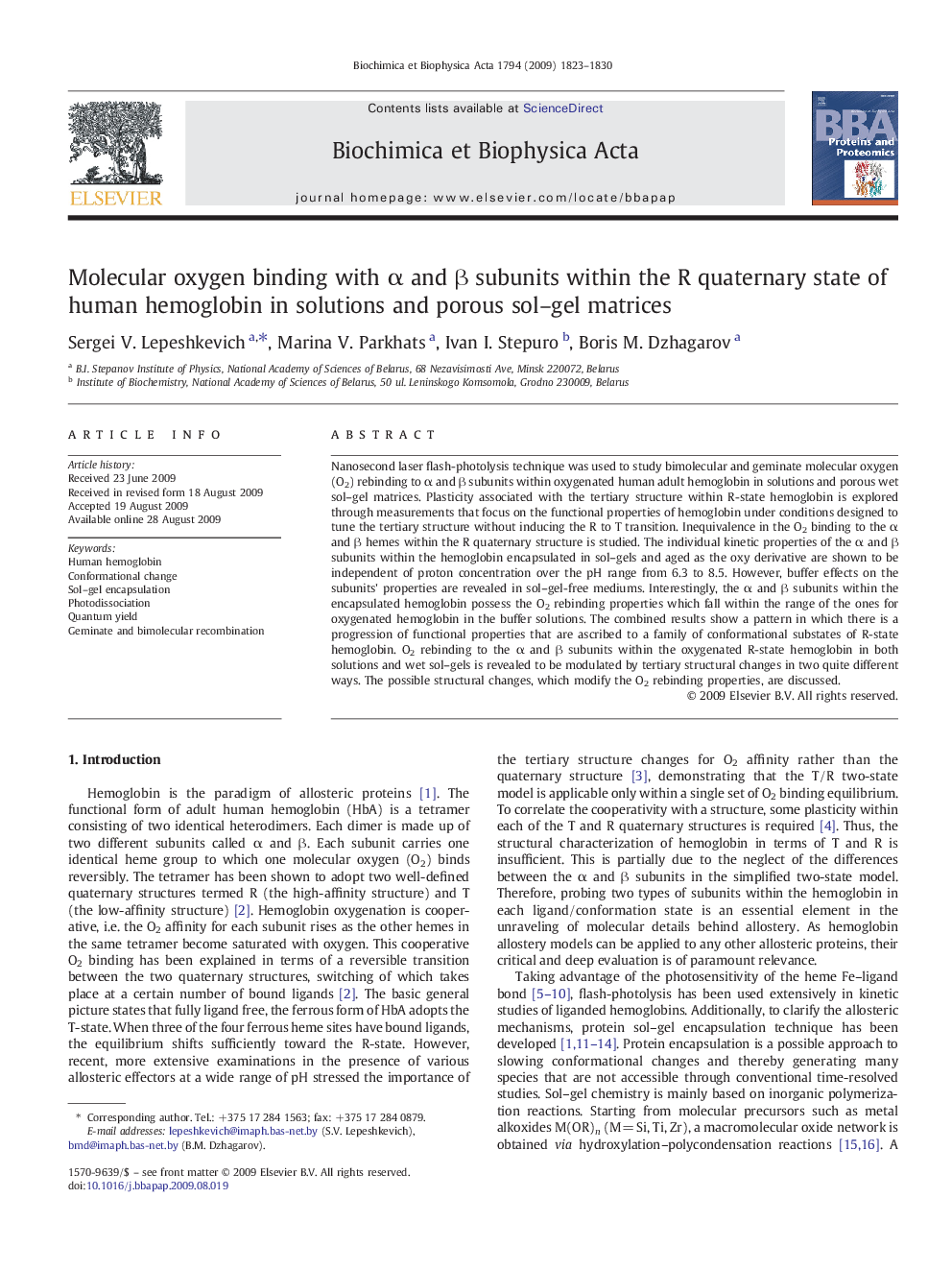| Article ID | Journal | Published Year | Pages | File Type |
|---|---|---|---|---|
| 1177940 | Biochimica et Biophysica Acta (BBA) - Proteins and Proteomics | 2009 | 8 Pages |
Nanosecond laser flash-photolysis technique was used to study bimolecular and geminate molecular oxygen (O2) rebinding to α and β subunits within oxygenated human adult hemoglobin in solutions and porous wet sol–gel matrices. Plasticity associated with the tertiary structure within R-state hemoglobin is explored through measurements that focus on the functional properties of hemoglobin under conditions designed to tune the tertiary structure without inducing the R to T transition. Inequivalence in the O2 binding to the α and β hemes within the R quaternary structure is studied. The individual kinetic properties of the α and β subunits within the hemoglobin encapsulated in sol–gels and aged as the oxy derivative are shown to be independent of proton concentration over the pH range from 6.3 to 8.5. However, buffer effects on the subunits' properties are revealed in sol–gel-free mediums. Interestingly, the α and β subunits within the encapsulated hemoglobin possess the O2 rebinding properties which fall within the range of the ones for oxygenated hemoglobin in the buffer solutions. The combined results show a pattern in which there is a progression of functional properties that are ascribed to a family of conformational substates of R-state hemoglobin. O2 rebinding to the α and β subunits within the oxygenated R-state hemoglobin in both solutions and wet sol–gels is revealed to be modulated by tertiary structural changes in two quite different ways. The possible structural changes, which modify the O2 rebinding properties, are discussed.
